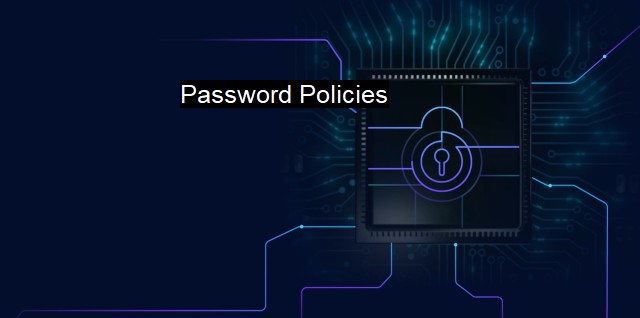What are Password Policies?
Fortifying Cybersecurity Through Strong Password Policies: Guidelines and Best Practices for Creating and Managing Secure Passwords
Password policies are crucial elements in cybersecurity strategies that organizations implement to keep their systems safe from unauthorized access and manipulation. The concept of password policy refers to the rules and guidelines that individuals follow in creating, using, and handling their passwords. It often outlines the system's defined protocols for password construction, lifetime, reusability and modification, character length, and complexity, and essentially offers a roadmap on safeguarding the most sensitive of personal and corporate assets.From a cybersecurity standpoint, password policies fortify digital defenses by reducing the likelihood of unauthorized network access considerably. Businesses, corporations, and public institutions use these policies as proactive measures to minimize incidents related to date theft, intrusion, system tampering, and sabotage, emphasizing the essential role these play in the maintenance and integrity of computer systems and network platforms. By enforcing stringent password policies, an organization affirms the importance of secure passwords and shields itself from the negative fallout of loose digital security measures.
One of the pivotal aspects of a robust password policy is the requirement for password complexity. This policy necessitates a mixture of diverse characters, including upper and lower-case letters, special symbols, and numbers, thus making a password more secure. The more varied and complex a password is, the less probable it is for cybercriminals to guess it correctly. It is tremendously more difficult for an intruder to crack a password with varied character sequence than one with a simple and predictable pattern.
Another critical policy element is setting a password lifespan. Password lifetime refers to the defined duration that a password remains valid before the user proactively changes it. Regular password updates act to jelly-roll potential intruders as the dynamic nature of the changing passwords keeps them guessing.
Password history and reusability is an equally significant component in formulating a reliable password policy. This element cites that certain passwords can't be reused immediately and have to stay dormant for a designated period before they become valid for reuse. By restricting password reusability and setting a password history, an organization reduces the risk associated with consistent password reuse and simplifies the tracing and tracking of potential intrusion and threats on the systems.
Password modification protocols, which include regulating the number of login attempts and blocking the user access after multiple incorrect inputs, for instance, form a critical aspect of password policies. These measures discourage guesswork from unauthorized individuals, significantly lowering data breach attempts.
While constructing strong password policies is fundamental in any cybersecurity framework, fostering compliance among users sits at the heart of its effectiveness. Ensuring every individual within an organization understands and adheres to these protocols requires constant education and reinforcement.
Bit by bit, as we reveal information about our lives through the digital sphere, cybercriminals find ways to exploit this. Trivial as it may seem, choosing strong, unique passwords can help to lock down our digital presences and protect us from these criminals. Still, creating unique strong passwords we can remember is demanding; this is where password managers come in.
Password managers are special security software that not only assist in creating complex and distinctive passwords for each of your online accounts but also securely store these passwords, thus relieving humans of the need to remember multiple diverse passwords. Most password managers employ strong encryption, such as employing high-level encryption often synonymous with industry standards, thereby providing an encrypted digital vault where only the user can retrieve stored passwords.
To maximize its effectiveness, a good password policy will find the balance between security and user convenience, ensuring that system users continue to comply with the password guidelines without its seeming as a massive burden to them. With enforcement of effective password policies and increased password user awareness, organizations can significantly reduce the risks associated with data breaches, thus making the world of digital communications safer for everyone.

Password Policies FAQs
What are password policies?
Password policies are a set of rules and guidelines that an organization or individual sets for secure passwords. These policies are used to protect sensitive information from unauthorized access and reduce the risk of cyber attacks.Why are password policies important in cybersecurity?
Password policies are crucial in cybersecurity as weak passwords are a major vulnerability for any system. They provide a layer of protection against cyber threats like brute-force attacks, phishing, and social engineering.What are some best practices for password policies?
Some best practices for password policies include requiring users to use complex passwords that are a mix of numbers and symbols, regular password expiration, two-factor authentication, and limiting password reuse. It is also important to educate users on the importance of strong passwords and how to choose them.How can antivirus software help with password policies?
Antivirus software can help enforce password policies by scanning for weak or compromised passwords and informing users when they need to change their passwords. It can also help prevent password-stealing malware and detect suspicious login attempts.| | A | | | B | | | C | | | D | | | E | | | F | | | G | | | H | | | I | | | J | | | K | | | L | | | M | |
| | N | | | O | | | P | | | Q | | | R | | | S | | | T | | | U | | | V | | | W | | | X | | | Y | | | Z | |
| | 1 | | | 2 | | | 3 | | | 4 | | | 7 | | | 8 | | |||||||